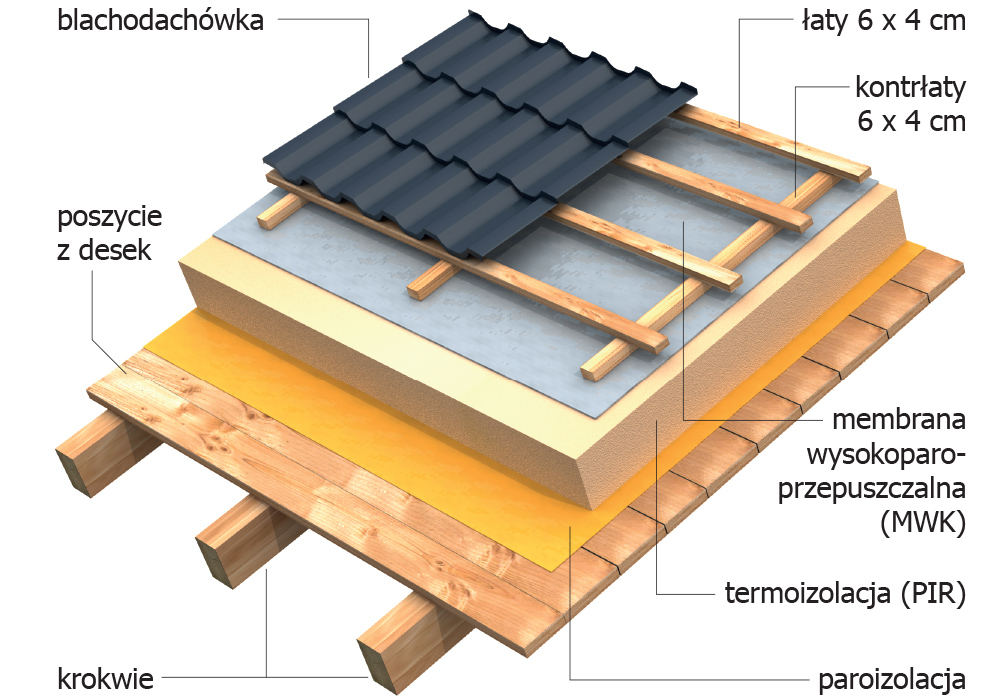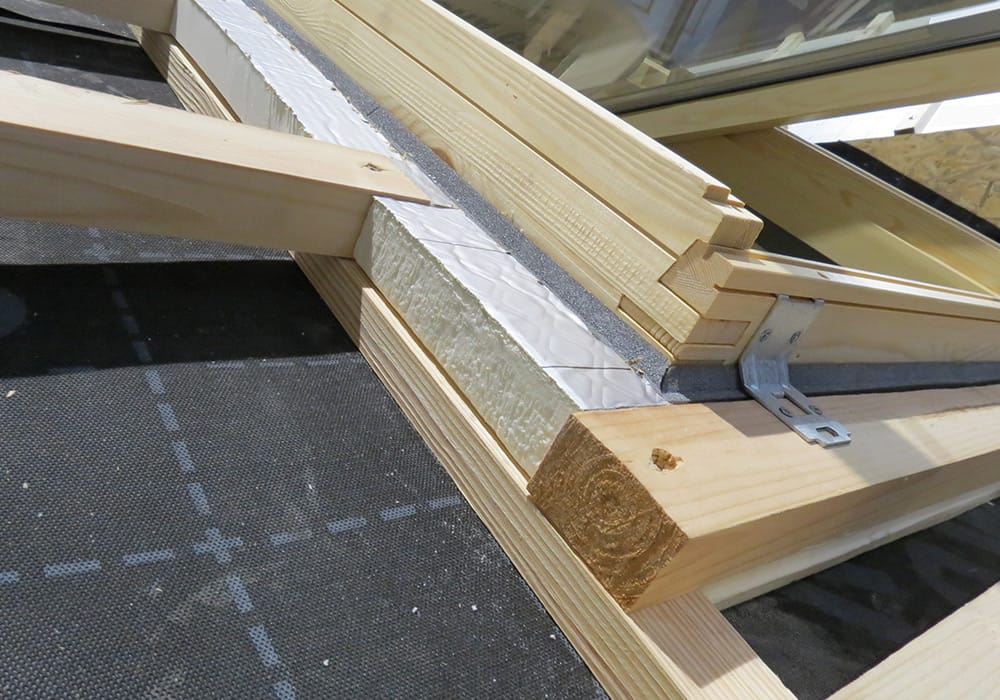A properly insulated roof provides both thermal and acoustic comfort in attic rooms. Remember, however, that buying good quality insulation material in this case is not enough, it is just the beginning.
The roof can be insulated when a closed raw is completed. The house does not have to be finished, but the windows and front door and the roofing door must be inserted. To avoid a costly replacement of insulation or even fragments of a roof truss, you need to take care of the appropriate layer layout, solid materials and their correct assembly. We present the most commonly used solutions.

Currently, a high -parotable membrane is used as preliminary coverage. It is placed above the insulation layer, under the roofing. The roof membrane is a kind of sealing layer of the basic covering of steep roofs. At the same time, it is permeable to water vapor – it allows it to get out of the house outside, thereby preventing the moisture of the thermal insulation layer and trusses. In addition, it is characterized by high strength to tensile and tear, it is light and easy to install. In order for the foil to fulfill its functions, it must be arranged with the right side – a layer reflecting UV radiation (producers for facilitating a print on it) should be directed outside. The membrane is attached to the rafters with staples. The sheets must overlap a minimum of 10-15 cm, the plants are protected with tape to connect roof foils. At the eaves, the foil is glued to the tin -tin foam belt processing – rainwater and condensing moisture will flow down the foil and gutter processing. In the ridge, we put the sheet to the other side of the roof, and finish the ridge with a subcourse tape. In the baskets we put a double layer of foil with 25-centimeter plants, sealed with double-sided adhesive tape. It is also important to secure elements passing through the roof slope – chimneys or e.g. chimneys venting sanitary and ventilation installations. The foil should be cut accordingly depending on the element on the roof.
Traditionally, mineral wool is used to insulate roofs in our country. This material owes its popularity to a very good (low) heat conduction coefficient – λ (lambda) at a level of up to 0.032 W/(MK). Thanks to this, we can easily achieve the value of the heat transfer coefficient U – for roofs from 2021, it can reach a maximum of 0.15 W/(m2K). For example, if we use wool with λ = 0.036 W/(mk) and arrange it in two layers of 15 cm each, we will reach U at 0.12 W/(m2K). The house design includes information about the thickness of the material and its heat conduction coefficient – we can use different material, but only about better parameters. The first layer is placed between the rafters in parallel, and the second cover with the previous layer across-avoid too strongly pressing with profiles constituting a subordinate for plasterboard. Wool should be cut with an allowance. The elastic mineral wool mats cut 2 cm wider than the rafter spacing allow you to maintain insulation continuity and tight filling of the space between the roof structural elements. Remember to combine roof insulation with wall insulation (if it exists) – otherwise a very large thermal bridge will be created. Wool also has a great ability to pass water vapor. In addition, it is non -flammable – the highest class of non -reality A1.

Another way to insulate is the thermal insulation made of pira foam with a closure cell structure. An example is Izopir plates offered by Blachy Pruszyński. The foam has refining admixtures that improve properties that relate to fire safety. It is a material that has the best thermal insulation on the construction market. This means that it meets thermal insulation requirements using smaller plate thickness than in the case of mineral wool. Izopir has a high strength of mechanical loads, thanks to which the installation can be done directly on the roof truss. High vapor barrier effectively prevents water vapor from entering the core of the plate – in this way no condensate is formed that promote heat escape. Roof insulation should be connected to wall insulation. This is important because, as in the case of warming with mineral wool, leaks will form a thermal bridge, which will cause a lot of heat loss from the room. The main advantage of using such a solution, apart from the thermal insulation of the building, is noticeably higher acoustic insulation. It is therefore worth thinking about this solution if you especially value silence at home.
Thermal insulation must be protected by vapor barrier foil – it is also a roof foil, but completely different than the pre -roofing foil. The use of such material for the initial
Roof covering would have fatal effects. The task of vapor barrier is to protect insulation against moisture and regulate the flow of steam flowing from inside the house. The 0.15 or 0.20 mm polyethylene foil is usually used. It is glued to metal profiles with a double-sided tape, sheets are placed with a 10-centimeter plant. All foil connections must be tight, even those with a peak wall or a muzzle – we seal them with a special double -sided tape or additionally with expansion tape. We also secure all the cuttings of the foil.
Roof geometry – check before laying the cover The roof tiles are mounted easily and quickly. […]
Read moreVery often, investors wanting to save on the costs of building the roof, and thus at […]
Read moreFrom the investor’s point of view, it may seem that technical knowledge about the angle of […]
Read more